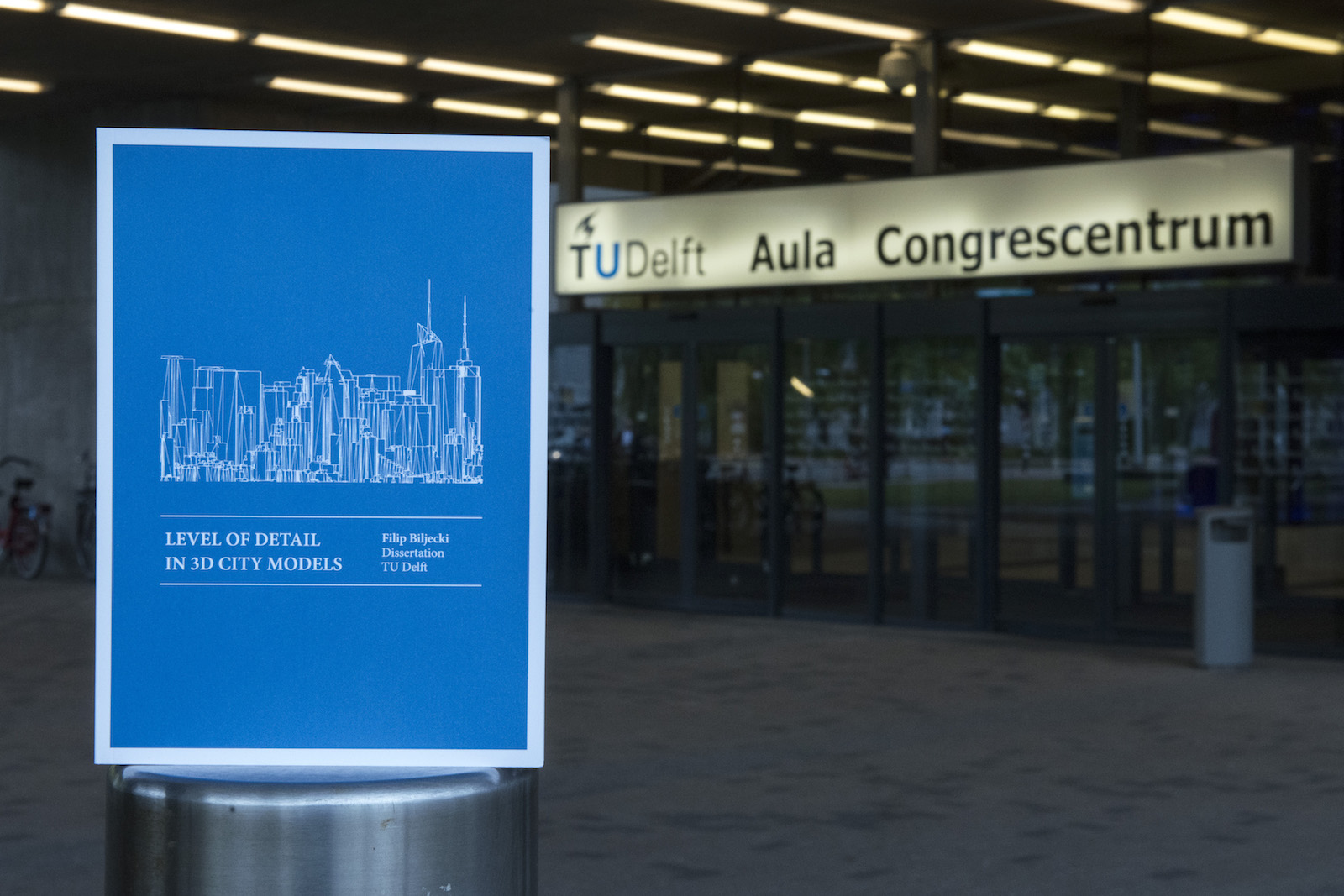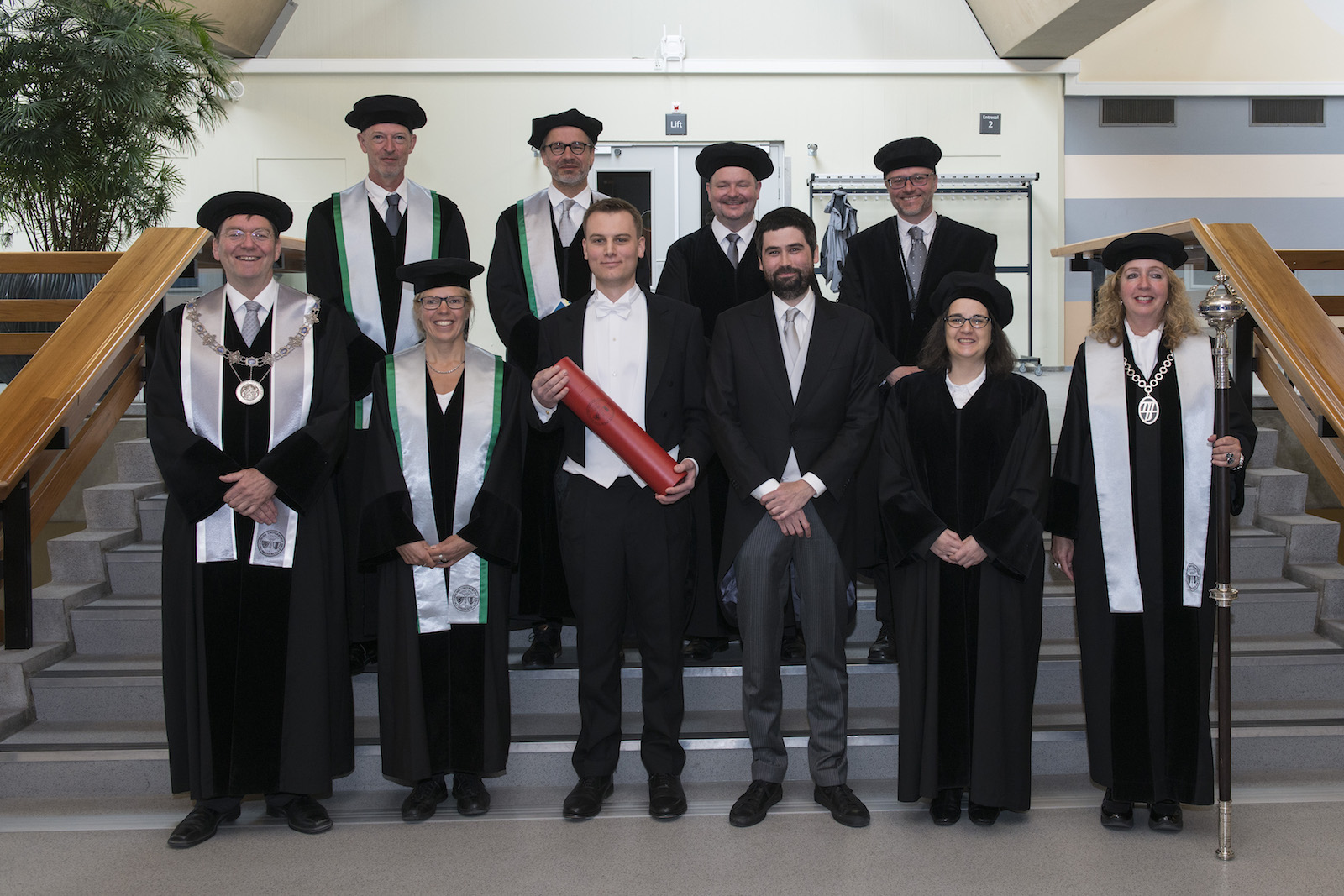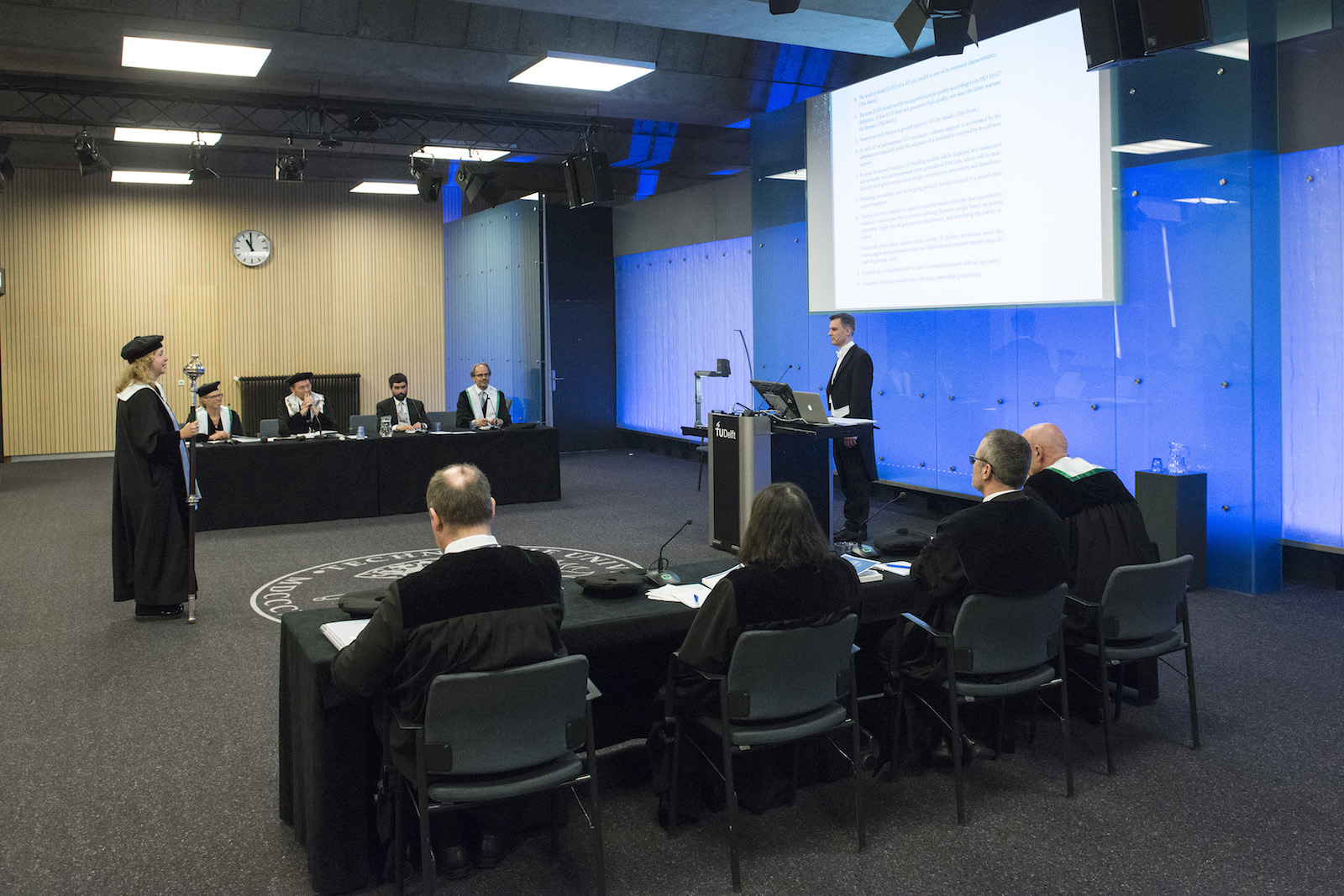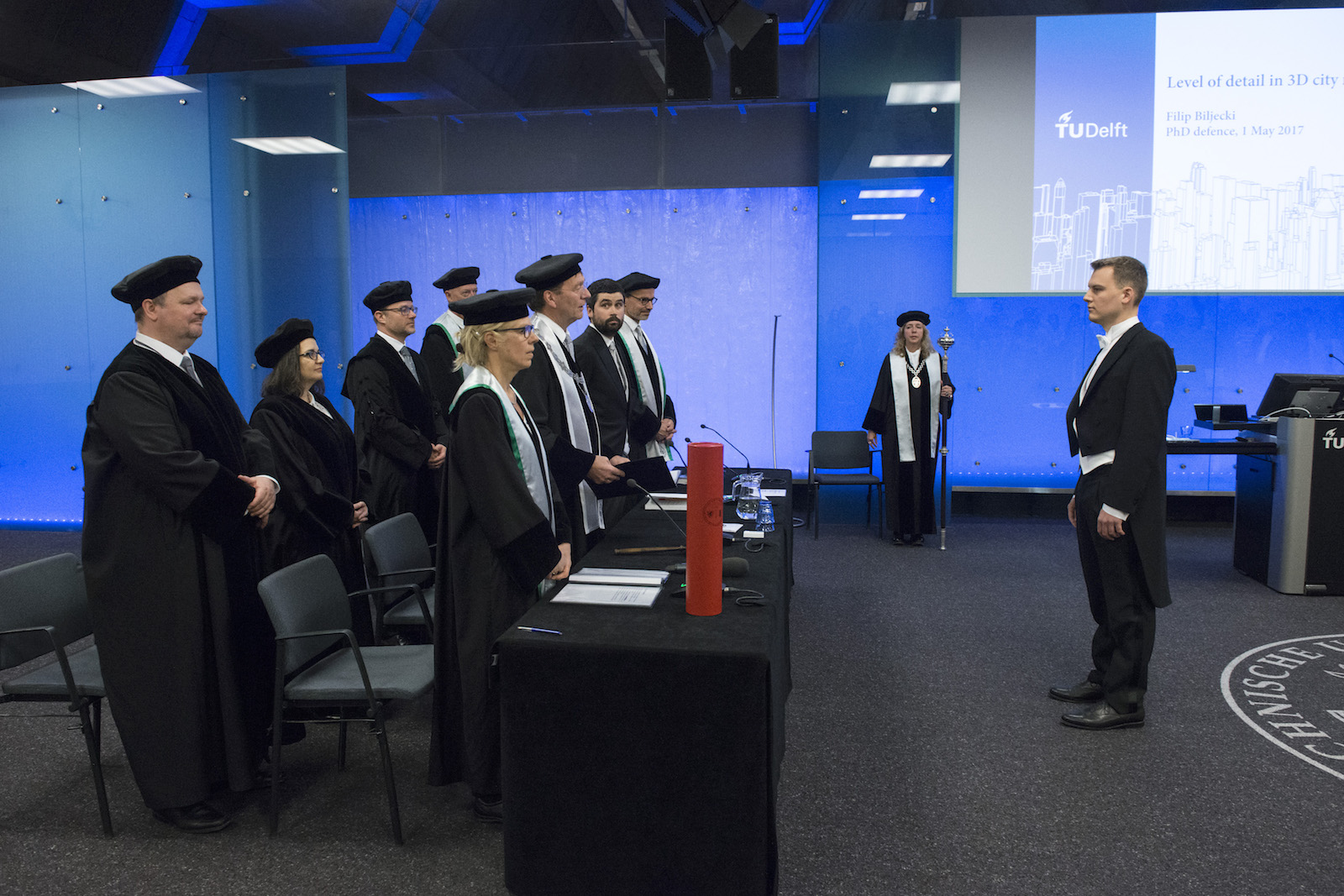Level of detail in 3D city models
Filip Biljecki ⋅ PhD dissertation ⋅ Delft University of Technology
This website summarises my PhD research carried out in the period from 2012 to 2017 at TU Delft. The research resulted in several publications, datasets, and software prototypes. The thesis was defended in May 2017, and it was awarded with highest honours (cum laude; top 5% in the Netherlands). The work was also awarded by the Austrian Academy of Sciences, and EuroSDR (the organisation of European national mapping and cadastral agencies, and universities).
Promotor: Prof. dr. Jantien Stoter, co-promotor: Dr. Hugo Ledoux
Research group: Delft University of Technology, 3D Geoinformation group
Financed by: Netherlands Organisation for Scientific Research (NWO), Dutch Technology Foundation STW through the Vidi project 11300 (5D Data Modelling: Full Integration of 2D/3D Space, Time and Scale Dimensions).

Short summary
The aim of the research was to investigate and to improve the concept of level of detail (LOD) in 3D city modelling. It ranges from conceptual frameworks (e.g. designing specifications) to developing algorithms and writing software packages.
LOD is a concept available in various disciplines from computer graphics and cartography to electrical circuit design. For GIS practitioners, it refers to the degree of the abstraction of the real-world, and it is a well-known concept that is frequently mentioned in the context of acquisition and utilisation of 3D city models.
However, the concept is burdened with several shortcomings, e.g. it is not standardised, the performance of LODs in a specific 3D spatial analysis is not benchmarked, and the consistency of multi-LOD datasets is usually poor.
The 4-year PhD research Level of detail in 3D city models tackled these issues through a number of topics that are presented in 13 chapters in the book.
For a longer summary please see the abstract in the thesis.

The image shows a 3D model of Delft, automatically generated with 3dfier (an open-source software developed at our group) using open data of the Dutch government.
Publications
The main output of the research is the PhD thesis Level of detail in 3D city models (353 pages).
PDF (99MB) Propositions Low-res PDF (12MB) DOI TU Delft repository BibTeX
@phdthesis{BiljeckiPhD, author = {Biljecki, Filip}, title = {Level of detail in 3D city models}, school = {Delft University of Technology}, year = {2017}, address = {Delft, the Netherlands}, month = may, doi = {10.4233/uuid:f12931b7-5113-47ef-bfd4-688aae3be248}, ISBN = {9789461868008} }The thesis is based on several journal and conference papers, all open access in my publications website.
The research resulted in other output such as software, data, and interview.
Propositions
All PhD theses in the Netherlands are accompanied by 10 or so propositions. You can read mine here. If you are interested in the concept of propositions, this blog post is a nice introduction.
Defence
Monday 1 May 2017 at 10:00, Senaatszaal of the TU Delft Aula Congrescentrum (Mekelweg 5, 2628CC Delft).
Committee members
Rector Magnificus, Chairman
Prof. dr. J.E. Stoter, Delft University of Technology, promotor
Dr. H. Ledoux, Delft University of Technology, copromotor
Prof. dr. R. Billen, University of Liège, Belgium
Prof. R.J. Dijkstra, Delft University of Technology
Prof. dr. T.H. Kolbe, Technical University of Munich, Germany
Prof. dr. A. van Timmeren, Delft University of Technology
Dr. C. Ellul, University College London, United Kingdom

Some photos...


Highlights of the research
Improvement of the LOD concept
The most prominent LOD concept is the one found in the OGC standard CityGML. It defines five standard LODs that increase in their spatio-semantic coherence [animation]. While the concept is famous, it has drawbacks, and this research aimed at its improvement (e.g. I have developed a proposal for a new specification of geometric LODs).
This research is associated with the OGC CityGML Standards Working group, and the results have been considered for the development upcoming version of the standard. Further reading: journal paper An improved LOD specification for 3D building models.


Formalisation
The concept of LOD is an ambiguous term in 3D city modelling. The thesis formalised the concept in a consistent framework, which can be used to assess the LOD of a dataset, improving exchange and communication of metadata. Further reading: journal paper Formalisation of the level of detail in 3D city modelling.
Error propagation
Propagation of errors is an important topic in GIS. The main research aim is to find the relation between the uncertainty in the input data, and the uncertainty in the output of a GIS operation or use-case.
However, state of the art is limited to rasters and 2D data. My research explores this topic in 3D and in semantically enriched geo-data. The developed methodology relies on the Monte Carlo method. Further reading: journal paper Propagation of positional error in 3D GIS: estimation of the solar irradiation of building roofs.

Procedural modelling
To support some of the aforementioned topics, especially the Monte Carlo method, I have created an (experimental) research software prototype of a procedural modelling engine that generates a large number of random buildings and realises them in multiple LODs in CityGML.
If you are interested in a sample of datasets generated by the engine, visit the Random3Dcity dataset page. The code of the engine was released open-source on Github. For other open-source software of the group please see the group's page.
Geometric references
Within the same LOD, there may be a number of variants of modelling practices. For instance, the top surface of the LOD1 block model may represent the top of a building or half of the height of the roof. This research investigates the different variants, and the influence that each variant has on a 3D GIS operation. For instance, the results of the computation of volume of buildings for energy demand estimation considerably vary between variants.
Further reading: journal paper The variants of an LOD of a 3D building model and their influence on spatial analyses.

Acknowledgments
This research was conducted in the frame of the STW project 5D Data Modelling: Full Integration of 2D/3D Space, Time and Scale Dimensions funded by the The Netherlands Organisation for Scientific Research, and which is partly funded by the Ministry of Economic Affairs (Project code: 11300).